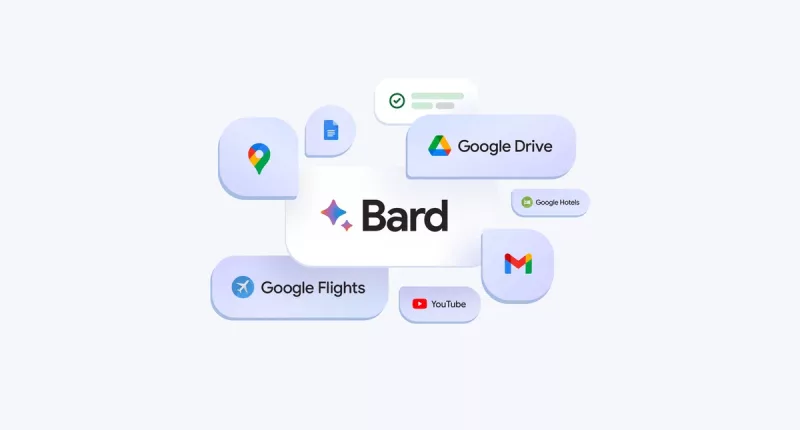In a bid to get one up over OpenAI’s ChatGPT, Google has now brought further changes into its own AI-powered chatbot, Bard. The search giant has connected the chatbot to one of its most popular consumer services –YouTube. In particular, the company expanded the chatbot’s understanding of YouTube videos, something that will allow users to ask specific questions about the content of YouTube videos.
This move aims to seamlessly integrate Bard into Google’s prominent consumer services like Gmail, Docs, and YouTube. Rather than relying on its novelty, Google seeks to position Bard as a practical and indispensable tool for users. Acknowledging user feedback, Jack Krawczyk, Google’s product lead for Bard, had noted that Bard, while intriguing, faced challenges in integrating into users’ personal lives. The introduction of Bard Extensions is a direct response to these challenges, signaling a shift toward a more user-centric approach.
“We’ve heard you want deeper engagement with YouTube videos. So we’re expanding the YouTube Extension to understand some video content so you can have a richer conversation with Bard about it,” Google noted. In order to enable the YouTube extension for Bard, users need to go to Bard’s homepage and click on the extensions button. Then, they need to toggle the ones they want to use, including the YouTube extension.
According to Yury Pinsky, director of product management for Bard, these Extensions will find information faster and more easily across Google’s family of apps and tools. “If you’re planning a trip to the Grand Canyon (a project that takes up many tabs), you can now ask Bard to grab the dates that work for everyone from Gmail, look up real-time flight and hotel information, see Google Maps directions to the airport and even watch YouTube videos of things to do there — all within one conversation,” Pinsky said.
Coming back to the expansion of Bard’s understanding of YouTube, users can now pose specific questions about the content of a video, elevating the conversational dynamics. This aligns with Google’s broader efforts to enhance AI capabilities within YouTube, experimenting with generative AI features to answer queries about video content and summarize comments. Google even provides an example of how this will work. Suppose you are looking up some cooking recipes online, you can ask Bard about its details. “For example, if you’re looking for videos on how to make olive oil cake, you can now also ask how many eggs the recipe in the first video requires,” the blog post read.
Google’s recent move to enhance Bard’s integration with YouTube carries significant implications, shaping the landscape of AI chatbots and user interaction with video content. For one, users can now pose detailed and content-specific questions about YouTube videos, transforming the way they interact with video content. The ability to inquire about specific details within a video, such as recipe ingredients or key points, enhances user engagement and provides a more immersive and interactive experience. Bard’s capacity to analyze individual videos for specific information also sets it apart in the realm of AI chatbots. This unique feature may contribute to Google’s competitive edge, especially in scenarios where users seek detailed insights from video content.
